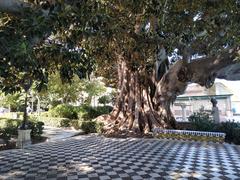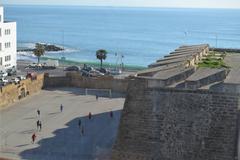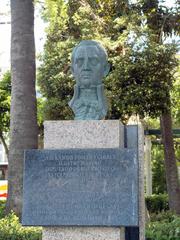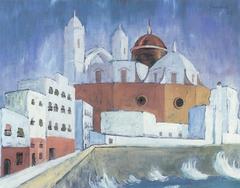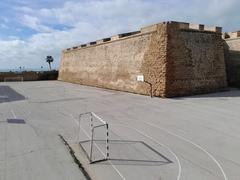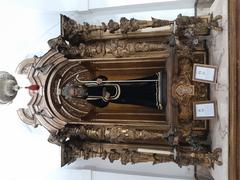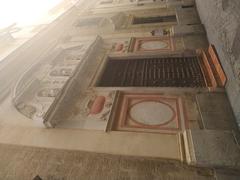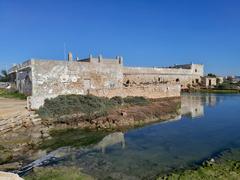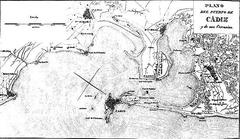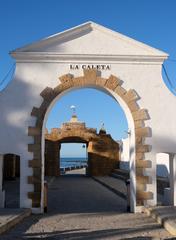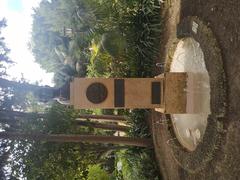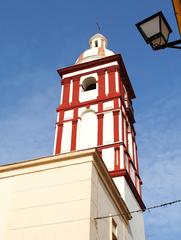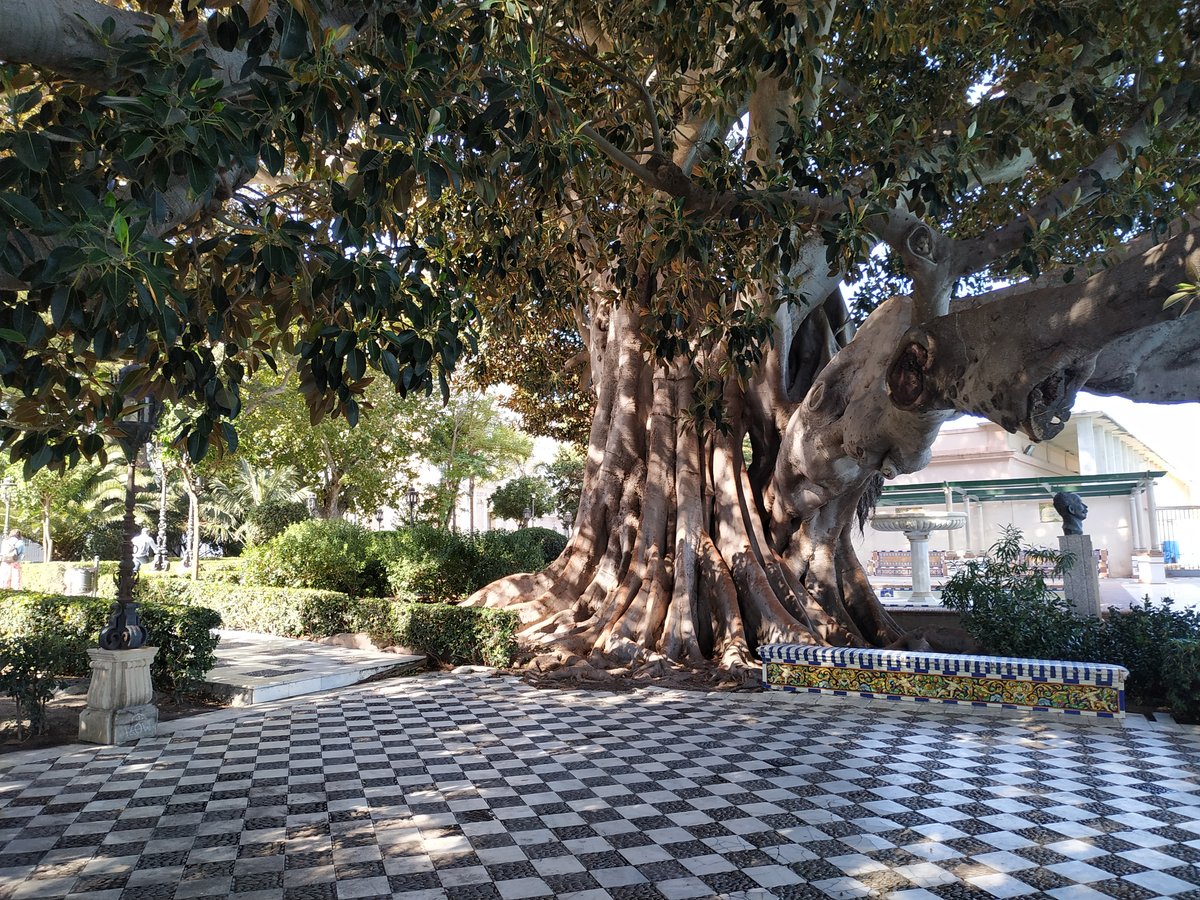
Alameda Apodaca y Marqués de Comillas, Cádiz, Spain: Visiting Hours, Tickets, and Historical Sites Guide
Date: 03/07/2025
Introduction: Alameda Apodaca’s History and Cultural Significance
Alameda Apodaca y Marqués de Comillas, now officially divided into Alameda Clara Campoamor (east) and Alameda Hermanas Carvia Bernal (west), is a celebrated promenade along the northern waterfront of Cádiz, Spain. Its roots trace back to the early 17th century, when the area was a coastal strip known as Caletilla de Rota. Over centuries, it evolved through various urban and landscape interventions, culminating in a 1920s redesign by architect Juan Talavera y Heredia in the Andalusian regionalist style. Today, the Alameda is a living museum of Andalusian art, featuring Sevillian ceramics, wrought ironwork, lush gardens, and panoramic vistas of the Bay of Cádiz (Cadiz Tourism, linguisimo.com).
The promenade acknowledges Cádiz’s maritime heritage and civic spirit by commemorating historical figures such as Admiral Juan José Ruiz de Apodaca and Claudio López Bru, Marqués de Comillas, with monuments and plaques. It also honors progressive figures like Clara Campoamor and the Carvia Bernal sisters, reflecting Cádiz’s evolving social values (laprovinciadecadiz.com).
Accessible at all hours and free to enter, Alameda Apodaca welcomes everyone to enjoy its botanical artistry, civic monuments, and community events. This guide details its history, architecture, visitor amenities, nearby attractions, and travel tips to ensure a rewarding experience (andalucia.com, Cadizforniatours).
Table of Contents
- Introduction
- Historical Overview
- Naming and Honored Figures
- Architectural Evolution
- The Monument to the Marqués de Comillas
- Visitor Information
- Social and Cultural Role
- Heritage Status & Preservation
- Frequently Asked Questions
- Practical Tips for Visitors
- Conclusion & Travel Recommendations
- References
Historical Overview
Origins and Early Development
The area now known as Alameda Apodaca was originally a natural coastline, acting as a buffer between Cádiz and the bay (cruceristasporelmundo.info). By 1617, it had become a formal promenade and a favored retreat for Cádiz’s elite (linguisimo.com).
18th–19th Century Enhancements
The 18th century saw the addition of tree-lined avenues and carriage paths, transforming the Alameda into a social hub. In the 19th century, landscaping introduced marble staircases, viewing platforms, and seating, reinforcing its reputation as a recreational destination (laprovinciadecadiz.com).
Naming and Honored Figures
The promenade’s sections were named to honor Cádiz’s maritime legacy. Alameda Apodaca commemorates Admiral Juan José Ruiz de Apodaca y Eliza, while Alameda Marqués de Comillas honors Claudio López Bru, a pivotal shipowner and civic leader (linguisimo.com, laprovinciadecadiz.com). In 2021, parts of the promenade were renamed after Clara Campoamor and the Carvia Bernal sisters, recognizing their contributions to suffrage and the arts.
Architectural Evolution
Between 1926 and 1927, Juan Talavera y Heredia reimagined the Alameda in the Andalusian regionalist style, blending geometric plazas, Sevillian ceramics, wrought iron elements, and lush greenery (wikiwand.com, turismo.cadiz.es). Key features include grand Australian fig trees (planted in 1909), decorative balustrades, and interconnected “salones” designed to maximize views and encourage social interaction.
The Monument to the Marqués de Comillas
A focal point is the Monument to the Marqués de Comillas, created by Antonio Parera Saurina and inaugurated in 1922 (guiadecadiz.com). This blue stone and marble monument features allegorical elements—a lion embracing a condor, bronze medallions of Cervantes and Columbus, and reliefs of steamships—symbolizing Cádiz’s role in Spanish and Hispanic history. The monument’s crypt formerly housed the first underground Hispano-American library, closed during the Spanish Civil War.
Visitor Information
Visiting Hours & Admission
- Hours: Open 24/7; best experienced during daylight for safety and scenic effect.
- Admission: Free; no ticket required for entry. Some guided tours or cultural events may charge a fee (andalucia.com).
Accessibility
The promenade is pedestrian-friendly with wide, level paths, ramps, and shaded benches suitable for wheelchairs, strollers, and visitors with limited mobility. Some historic sections have cobblestone or uneven surfaces—comfortable footwear is advisable.
Getting There & Nearby Attractions
Centrally located, Alameda Apodaca is accessible on foot from Cádiz’s historic center. Local buses stop near Plaza de Argüelles and Avenida Duque de Nájera, while street parking is available nearby (though limited during peak hours). The promenade is close to key sites such as Cádiz Cathedral, the Roman Theatre, Genovés Park, and the Baluarte de la Candelaria (andalucia.com).
Guided Tours & Events
Local operators offer guided walking tours that include architectural, historical, and cultural insights into the Alameda (Cadizforniatours). The promenade is a venue for open-air concerts, art exhibitions, and community festivals, especially during spring and summer. Check the official tourism site for updated event listings.
Photographic Highlights
Capture panoramic vistas of the bay from Salón Alto and Salón Bajo. Details such as colorful azulejo benches, wrought ironwork, fountains, and the Marqués de Comillas monument provide striking photographic opportunities.
Social and Cultural Role
Since its inception, Alameda Apodaca has been a center for social life—hosting family outings, celebrations, and cultural gatherings (cruceristasporelmundo.info). Sculptures honoring figures like José Martí and Rubén Darío highlight the city’s transatlantic connections and its role as a bridge between Spain and Latin America.
Heritage Status & Preservation
Declared a Garden of Cultural Interest and listed in the General Catalogue of Andalusian Historical Heritage, Alameda Apodaca benefits from ongoing conservation and restoration efforts (wikiwand.com). Community engagement through guided tours and educational programs ensures its continued relevance and vitality.
Frequently Asked Questions (FAQ)
Q: Is Alameda Apodaca open to the public at all times?
A: Yes, it is accessible 24/7 as a public space, although daylight hours are best for safety and enjoyment.
Q: Is there an entrance fee or ticket required?
A: No, entry is free. Tickets may be needed for some guided tours or special events.
Q: Is the promenade accessible for people with disabilities?
A: Yes, the main pathways are wide and level, though some historic areas may have uneven surfaces.
Q: Are guided tours available?
A: Yes, several local operators include Alameda Apodaca in their Cádiz historical tours.
Q: Which nearby attractions should I visit?
A: Genovés Park, Baluarte de la Candelaria, Cádiz Cathedral, and the city’s museums are all within walking distance.
Practical Tips for Visitors
- Footwear: Wear comfortable shoes for cobblestone paths and uneven sections.
- Sun Protection: Bring sunscreen, a hat, and water during warmer months.
- Best Times: Early morning and late afternoon offer pleasant temperatures and optimal lighting for photos.
- Pets: Dogs are allowed on leashes; owners must clean up after them.
- Cycling/Skating: Permitted at a slow pace; be mindful of pedestrians.
Conclusion & Travel Recommendations
Alameda Apodaca y Marqués de Comillas stands as a testament to Cádiz’s blend of historical grandeur, community spirit, and natural beauty. Its open, accessible design invites visitors year-round to enjoy its gardens, monuments, and striking bay views. Whether you’re a history enthusiast, a photographer, or simply looking for a tranquil urban escape, this promenade is a must-see in Cádiz.
Plan your visit for spring or early summer to enjoy blooming gardens and lively local festivities. Take advantage of guided tours to delve deeper into the site’s history and architecture, and explore nearby landmarks to round out your Cádiz experience. For up-to-date information on events and practical details, consult the official Cádiz tourism website and consider downloading the Audiala app for personalized recommendations.
References
- Discover Alameda Apodaca: Cádiz’s Historic Promenade and Visitor Guide
- Alameda Apodaca and Hermanas Carvia Bernal
- La Alameda Apodaca: Un Lugar con Mucha Historia en Cádiz
- Alameda Apodaca Architectural Overview
- Cádiz Tourism Official Site
- Cadizforniatours Blog on Alameda Apodaca
- Andalucia Tourism - Cádiz Cultural Tourism
- Guide to Cádiz Monuments
- Andalucía.com - Alameda Apodaca Cádiz
- Minube Travel Guide on Alameda Apodaca
